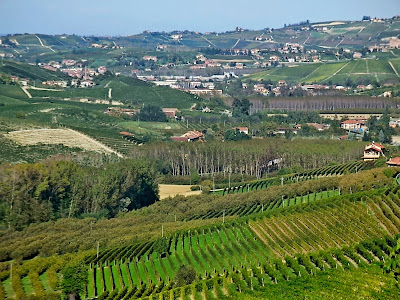This week I'm going to focus on the wines from Avellino in the Campania region of southwestern Italy. You may also know this area and coast by way of the Gulf of Napoli or one of my favorites, the stunning Amalfi Coast. If you haven’t been I strongly recommend adding it to your list next time you visit Italy. I’m happy to share some of my pictures if you need convincing and you won’t need it much longer after that. In the Boston area, where I live, there are many Italian immigrants that migrated here from Avellino, including my great grandparents on my father's side.
I'm very proud of my Italian heritage. Growing up in an Italian household with a mother that is an amazing cook has made me appreciate the wonderful traditions in the food that is celebrated throughout the regions in the country. Living in Italy over 10 years ago made me appreciate the wonderful wines that this country can produce and has brought me back there time and time again.
The Campania region, in particular Avellino, is known for their whites including Greco, Fiano and Falanghina. You can visit one my earlier blogs here about a Falanghina from one of the top producers from this region, Feudi di San Gregorio. The top red wine in this region is Taurasi made from the Aglianico grape. They produce other whites as well such as Coda di Volpe that is typically blended in and reds like Piedirasso and Sciascinoso, but today I’m going to focus on the primary grapes of this region. .
Greco grape
Greco is typically the lightest of the whites and is crisp and dry with notes at times of almond and lemon. You can find it listed as Greco di Tufo DOCG from the Avellino area if it qualifies for that status, but you can also locate Greco in other parts of Italy. Both Greco and Fiano were granted the ability to use the DOCG status in 2003. The soils of this area can be minerally since there are remnants of the lava and volcanic ash from Mt. Vesuvius.
Fiano grape
Fiano has more intensity than Greco and is more aromatic with hints of honey mostly. In Avellino you can find it also under the DOCG designation known as Fiano di Avellino DOCG if it meets the requirements, which is a minimum of 85% of Fianco. I’ll speak more in depth about this grape on my next blog after the tasting.
Aglianico grape
Taurasi is your most popular red in the Campania region, which is primarily made up of Aglianico. Mastroberardino was the original classic producer of Aglianico, but it has become much more widespread now due to its recognition in the wine world and now many other producers are growing this grape. It’s a rich wine with tannins, hints of smoke and leather. Aglianico also is known to come from the Basilicata area, known as Aglianico del Vulture. They were also granted DOCG status further back in 1993 and their wines also must be a minimum of 85% Aglianico with a blend of other grapes like Barbera, Piedirasso or Sangiovese. To be granted DOCG status they must age the wines 3 years with at least 1 of those years in wood and to be named a Riserva it requires 4 years with 18 months in oak.
 |
| Aglianico grapes |
Tomorrow I’ll be attending an Italian wine tasting where I’ll be sampling a Fiano from Casa di Baal, along with some other wines from the Piedmont region, which will tie in nicely with what I have been covering lately so make sure to come back over the next couple days.

















